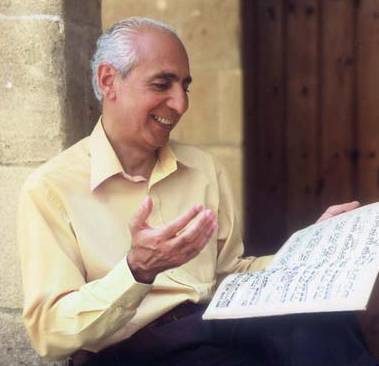|
<< -- 3 -- Bill Newman INFALLIBLE BEAUTY

The opening recital already written up, I suffered illness before the next one but can vouch for my colleague Jean Cochran's admiration for the infallible beauty of Tirimo's phrasing and touch. On 6 May, the highlights were 1777/1789 late Sonatas K309/576 and two sets of Variations -- one based on Benedict Schack, the first of 'The Magic Flute' Taminos, K613 -- 'A wife is the most wonderful thing'. The other was the more popular Nine Variations in D on a Minuet by Duport, K573. In common with all programmes, come pieces composed by the child Mozart -- the 'London Chelsea Sketchbook' K15 (aged 8) -- Nos 5-10 and 15e. Other works were the 8 Menuette, K315a (17), Fantasie in D minor K397 and 6 German Dances K509 (dating from 1783-87).

Martino Tirimo in Cyprus. Photo © 2001 Nicos Louka
|
Apart from K1-5 and K15, other Koechel numbers by the young Mozart are K9a, 24, 25, 33b, 54, 94, 103, 154a, 179, 180 -- all to be discussed following programming. In 1990, critic Max Harrison, writing about the 'so called' Walter Gieseking Complete Solo Mozart -- an EMI-English Columbia CD reissue set, quotes 'melodies with simple accompaniment' at 6-7 years, and variation sets four years on -- 'that do not take matters much further'. He prefaces this with: '... But a study of the gradual development of Mozart's piano style, facilitated by these records, is a fascinating experience ...' How time, and further discoveries have come about is revealed by comparing the great Gieseking's rather protracted, old 1953/4 recordings with Martino Tirimo's more up to date, completer survey with its much wider, fulsome set of programme notes alongside! I am not in the least worried listening to the child-Mozart's rather wondrous efforts (only partly covered in Gieseking's eight-CD compilation) intermingled with later, comparative rarities (which the German player mainly includes). They all 'build' towards a quasi vocal-operatic tapestry of achievement that re-awakens and revitalizes our appreciation of the composer's genius and not, as our friend Charles Hazelwood would like us to believe, purely the fact that Wolfgang Amadeus's DNA matched that of the listening-admirers of his day.
Continue >>
Copyright © 14 September 2006
Bill Newman, Edgware UK

|

